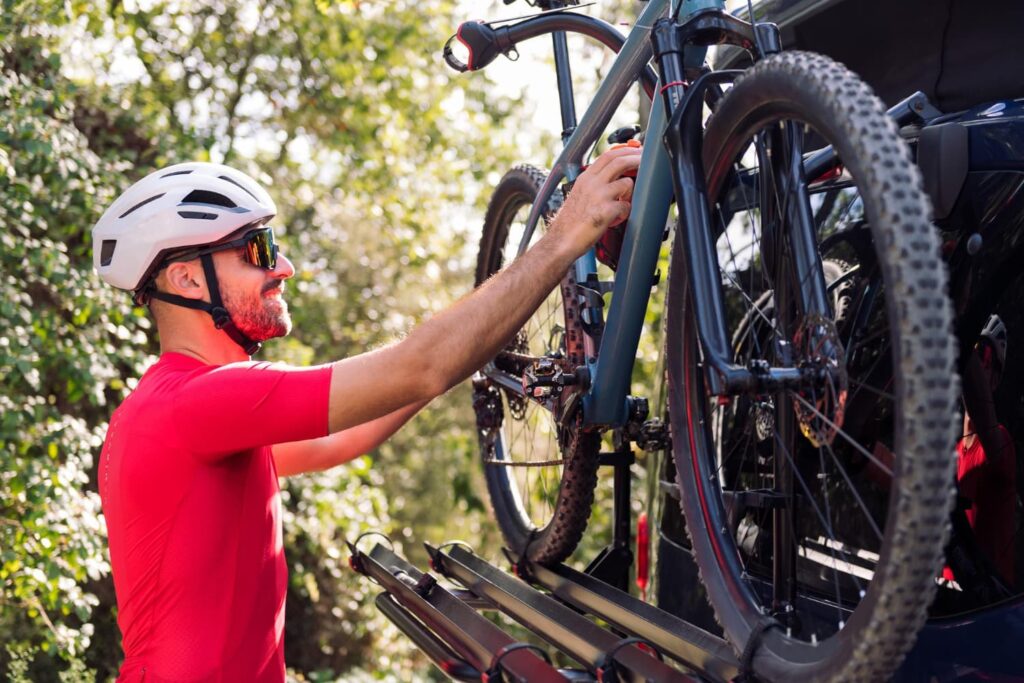Understanding the Importance of Safe Transport
Transporting your mountain bike safely is crucial, especially if you love hitting the trails during weekends. Nothing feels worse than finding your bike scratched or damaged after a long drive. The good news is, with the right equipment and knowledge, you can protect your prized possession and ensure it arrives at your destination in one piece. Let’s break down the best ways to transport your mountain bike securely. Buckle up; this is going to be a ride.
Choosing the Right Transport Method
Bike Racks vs. Bike Cases
When it comes to transporting your mountain bike, you generally have two popular options: bike racks and bike cases. Each has its pros and cons, depending on your needs, budget, and vehicle type.
- Bike Racks: These are typically mounted on the back of your vehicle and can carry one or several bikes. They’re great for easy access and quick setups.
- Bike Cases: These are protective coverings that enclose your bike, making them ideal for air travel or long road trips. They safeguard your bike from bumps and scratches.
Deciding between a bike rack or a case comes down to what fits best for your riding habits. If you often drive to trailheads and prefer convenience, a rack may suit you best. If you find yourself hopping on planes or embarking on lengthy road trips, a case could be your knight in shining armor.
Top Picks for Bike Racks
Let’s start with bike racks then. There are three main types: hitch-mounted, trunk-mounted, and spare tire-mounted racks. Each has its quirks, so let’s jump into the specifics.
- Hitch-mounted racks: These are super convenient and sturdy. They connect to your vehicle’s hitch, making loading and unloading a breeze. Many models can hold multiple bikes, meaning you can bring your friends along for the ride.
- Trunk-mounted racks: These are perfect for smaller vehicles or those without a hitch. They strap onto the back and are relatively inexpensive. Just be mindful of your bike’s weight capacity, and try to avoid completely blocking your rearview.
- Spare tire-mounted racks: These are a winner for SUVs with a spare tire mounted on the back. They are easy to use, but they require the particular design of the tire to work effectively.
In my own adventures, I’ve found that hitch-mounted racks provide the right blend of security and accessibility. You can quickly load up your bike after a ride without going through a gymnastic routine. Bonus points if you don’t have to wrestle with getting your bike on a trunk rack after a long day of riding.
Choosing the Right Features
When picking out a bike rack, consider these key features:
- Weight Capacity: Make sure the rack can support your bike’s weight. It is always better to have a little margin in case you decide to swap for a beefier bike.
- Bike Frame Compatibility: Ensure your rack accommodates the frame design and size of your bike. Some racks require a specific style of frame.
- Ease of Installation: A user-friendly installation process will save you from trial and error (and aching muscles).
How to Secure Your Bike on a Rack
Setting Up Your Bike Rack
Once you’ve chosen a bike rack, it’s time to set it up. You want your bike secure on the rack to minimize any bouncing or swaying during your journey. Here’s how:
- Follow the Instructions: Seriously, read the manual. Every bike rack has specific instructions, and following them saves you from a lot of headaches.
- Check the Fit: Ensure the rack is tightly secured and fits your vehicle correctly. Give it a little shake to test the stability.
- Use Straps: Most racks have specific straps to hold your bike in place. Make sure they’re snug but not overly tight. You don’t want to damage the frame.
- Adjust the Arms: If your rack has adjustable arms, ensure they are configured to fit your bike frame shape and size.
After setting everything up, I often take a quick stroll around my vehicle to make sure all connections are steady. This little habit keeps my mind at ease knowing my bike is securely strapped in.
Tips for Driving with a Bike Rack
Once you hit the road, keep these reminders in mind:
- Check Visibility: Take a look at your mirrors to make sure the rack does not obstruct your view. Safety first!
- Account for Length: Your vehicle is longer with a bike rack attached, so maneuver carefully during turns and while parking.
- Drive Carefully: Speed bumps, potholes, and sharp turns can take a toll on your gear. Drive smoothly.
Exploring Bike Cases
Understanding Bike Cases
Now, let’s pivot to bike cases. They come in either hard-shell or soft-shell varieties. Both options have merits and are suitable for different kinds of travel.
- Hard-shell cases: These provide the *ultimate* protection. They are impact-resistant and can withstand rough handling. Great for check-ins at airports where luggage can be thrown around.
- Soft-shell cases: Lightweight and lower in price, these are ideal if you need something portable but still offer a decent amount of protection.
How to Pack Your Bike into a Case
Packing your bike properly is critical to preventing damage. Here’s how to do it:
- Disassemble the Bike: Remove the front wheel, pedals, and sometimes even the handlebars, depending on the case size.
- Use Padding: Wrap your frame and wheels in bubble wrap or foam to add an extra layer of protection. You can never be too careful!
- Secure Everything: Make sure the components are securely packed and will not move during transport. Nothing beats the cringe of hearing your bike rattle in the case.
- Double-Check Before Closing: Here’s where you do a final gear check. Make sure nothing squeezed into an awkward position and your precious cargo is snug inside.
Choosing the Right Bike Case
When selecting a bike case, consider your travel frequency, budget, and type of bike. Here are some factors to think about:
- Size: Ensure the case accommodates your bike type. Some are designed specifically for road bikes, while others can handle mountain bikes.
- Weight: If you plan on carrying the case, consider weight to make transport easier.
- Transport Method: Evaluate how you will be traveling. Will it be on a plane? A bus? Depending on how you travel, some cases may work better than others.
Other Tips for Safe Transport
Transporting your mountain bike is not just about racks and cases. Here are some additional tips to keep your two-wheeled friend safe:
- Invest in a Good Lock: If you’re making stops along the way, a quality lock will secure your bike when you’re not around.
- Clean Your Bike: Give your bike a quick clean after a muddy ride. This can prevent dirt from sticking to the vehicle and causing scratches.
- Check Weather Conditions: Protect your bike from extreme weather, whether it be heavy rain or ridiculous sun exposure. Consider a weatherproof cover if needed.
Conclusion: Wrapping It Up
Transporting your mountain bike safely is all about combining the right equipment with good practices. Whether you choose a reliable bike rack or a durable bike case, always prioritize your bike’s protection. With the tips and tricks outlined here, you will have peace of mind on the road. Enjoy your ride knowing your bike is safe and sound. Happy cycling!






